Why do some animals have a superyad? [Transfer]
We all heard stories about how snakes, jellyfish and scorpions can kill a person. But why these predatory animals have such a powerful poison, when the size of their typical prey is much smaller than a human?
My dreamy mood during a walk through the beautiful Costa Rican National Park "Corkovado" came to a sudden end, when the guide pushed my hand into my chest.
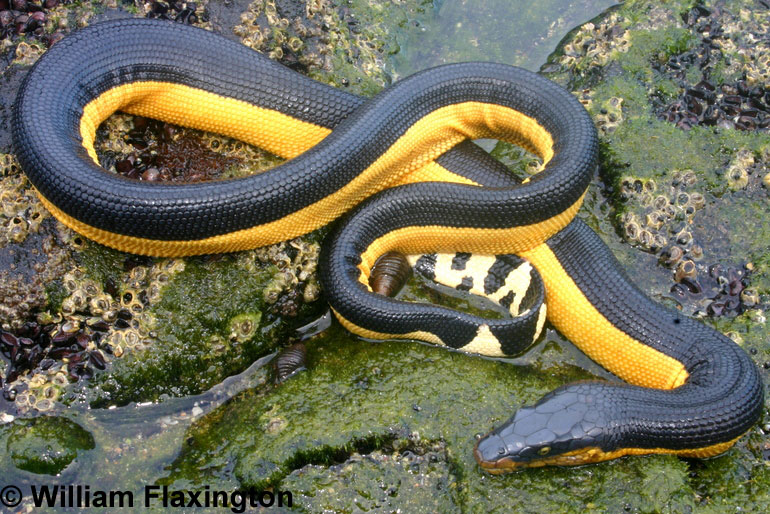
(Yellow sea snake, also known as Pelamis platurus)
“Wait!” He shouted, pointing to something actively moving under the sand. "This is a sea serpent."
While I was watching the yellow-snake sea serpent, which is outside its native element and is clearly restless, I remembered a fact that I had learned as a child. "Sea serpents," my young self reminded me, "the most dangerous of all snakes. You should be careful." In principle, it is true that many sea snakes, and land snakes for that matter, are incredibly poisonous. In one snake bite, taipan has enough poison to instantly kill about 250,000 laboratory mice or 100 people. And this is true not only for snakes.
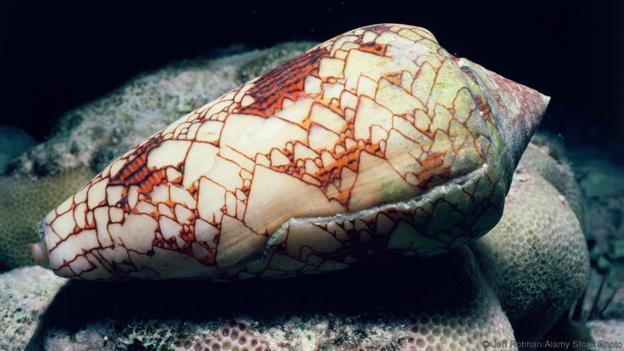
(Cone-Clam)
One drop of clam venom poison Marmoreeus can kill 20 people. A sting of a jelly can cause cardiac arrest and death within minutes. This begs the question: why have a powerful weapon capable of killing dozens of people, if you use it only one-on-one, especially if your prey will be much smaller than a man? It seems that the superyads simply do not make sense from an evolutionary point of view.
The reason for encouraging animals to have a poisonous weapon in their arsenal is quite simple. Poison allows the predator to weaken / kill its prey, thus helping to avoid the excess risk caused by the protracted fight with the prey. Poison is also useful for defense purposes. However, the exorbitant toxicity of some organisms is surprising. Why can a snake be able to kill hundreds of thousands of mice with a single bite? This looks especially strange, considering that poison is an expensive weapon.
Poisons usually contain a mixture of protein-based toxins, often working as a team in order to damage the attacker's internal organs. Hemotoxic snake venom may contain one component that prevents blood clotting, and another component that destroys the walls of blood vessels. The result of the poison is a bit predictable.
Protein synthesis requires significant energy consumption, but this did not stop the evolution of poisons containing thousands of peptides and proteins, even if at great cost to animals using them. And to some extent, they themselves are aware of the price of their poison. Such things are difficult to directly test, but it seems that snakes are able to regulate the amount of injected poison, depending on the size of their victim, so as not to waste precious poison for good reason. Moreover, one experiment conducted on rattlesnakes, showed a 11% increase in metabolism, thereby demonstrating the existence of a link between physical stress and the production of poison.
A classic look at natural selection says that “expensive” genes will be discarded if they do not have an absolute need for survival. And such a drop really happened in some species: since the marble sea serpent (Aipysurus eydouxii) after switching to eating fish caviar lost its ability to produce poison. However, the fact remains that there are many animals with expensive "cocktails" of chemicals in canines, stings and spikes, which are much more powerful than they probably need for survival. Why?
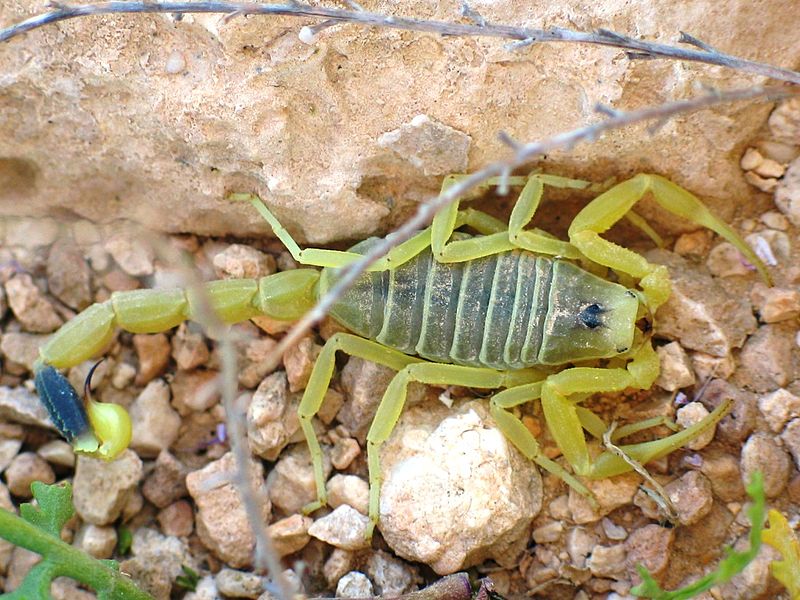
(Prowling Over Death, in Latin, known as Leiurus quinquestriatus)
The traditional view is that increased toxicity is an attempt to compensate for the lag in other areas. Any desert dweller will tell you that when it comes to scorpions, then most of all you should be wary of not at all big and scary scorpions, but small ones, like a scorpion, eloquently called "Deathstalker", which is considered the most dangerous scorpion in the world .

(Kubomedusa devours his victims)
"Kubomedusa is also a good example," says Yehu Moran, a researcher at the Hebrew University of Jerusalem, who, along with his colleague Kaatyk Sunagyr (Kartik Sunagar), recently analyzed how natural selection affects toxic toxins of animals over generations. "They are extremely fragile and anything with the power of fish can break them from the inside when they try to devour it. Therefore, the poison must be 100% effective and cause lightning death." If a predator is small, frail or slow, then it is vitally important that its venom was able to almost instantly disable the prey in order to avoid its escape or struggle with it. In such cases, it is easy to see how the increased toxicity has passed natural selection.
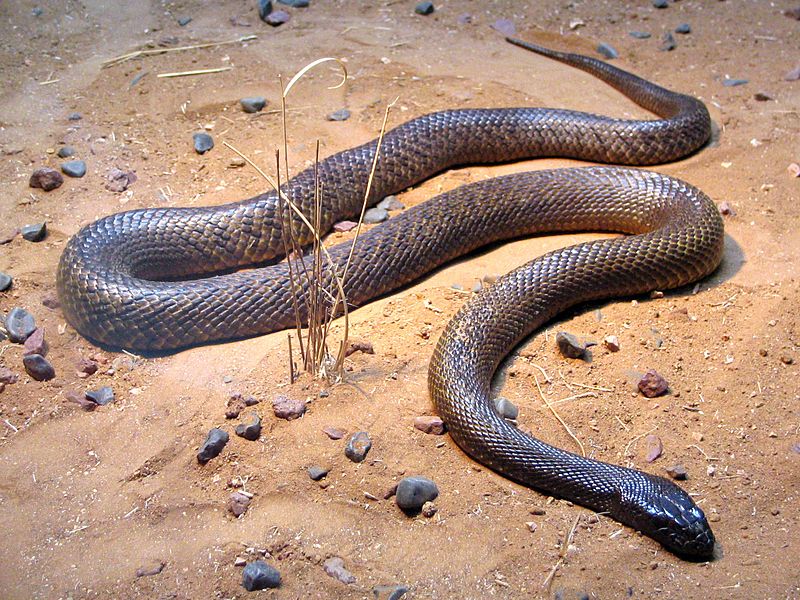
(Intra-mainland Taipan, also known as the "Cruel Snake")
The economy also plays a role. The inland taipan (inland taipan) lives in the arid center of Australia, where it is important that the poison causes a guaranteed and instant death. In the desert, every meal can be the difference between life and death, so the snake simply can not give his victim at least one chance of survival. But even in this case, the ability to kill 250,000 mice in one bite seems to be a bend. Wolfgang Wuster, an expert on snake venom from the University of Bangor, in the UK, has a simple answer to the question of why Taipans can kill 250,000 laboratory mice with a single bite.
“It's because they just don’t eat lab mice,” he says. "The lethality of the poison in relation to these mice has nothing to do with how the taipan behaves in the wild." Although the test is LD50 (short for “lethal dose of 50%,” it is this part of the test group that must be killed to measure the strength of the poison. Testing is carried out on different types in order to find the “average hospital strength” of the poison. Testing is carried out not only on laboratory rats and mice but also on monkeys, cats, dogs, birds, fish and rabbits.) uses mice as the main measure of poison toxicity, but this approach has drawbacks.
“This mouse model allows you to collect standard data,” says Robert Harrison, “However, mammals are not always included in the menu, so the effect of poison on mammals may not be particularly important for its toxicity in amphibians, birds and arthropods. " Most poisonous predators target a kind of narrow and specific group of prey species, and it is these species that influence the evolution of their venom. The result is an evolutionary arms race. The prey species evolves towards increasing resistance to poison, while the predator species is forced to strengthen and improve its poison.
, , , , . , , , , . " ", — . " - , , , : .
, - . , , .
, . , , .
" , 20 ., , ".

" , - , ".
-, , , . , - , . .
(coral snakes), -, , . , - , . , , , , .
. , , - . , . C , , - (Cone snail), . , , , . , , , .
, , , , , . " ", — . , - , . .
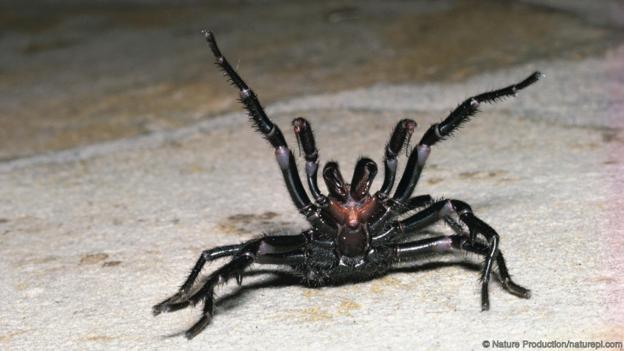
( - , Atrax robustus)
, - (Sydney funnel-web spider), , . , , , , , . , , . , , , . , , , .
, , , . , - . — . - , , , . , . , . , , , - . . , — .
, :
http://www.bbc.com/earth/story/20160404-why-some-animals-have-venoms-so-lethal-they-cannot-use-them
')
Source: https://habr.com/ru/post/369601/
All Articles